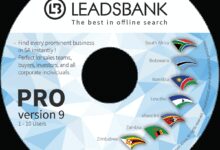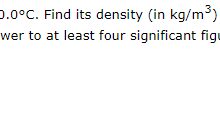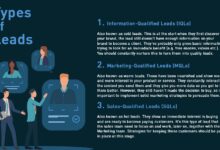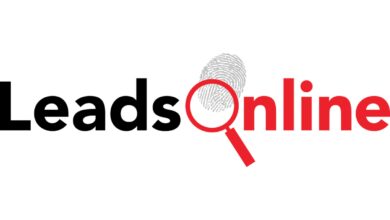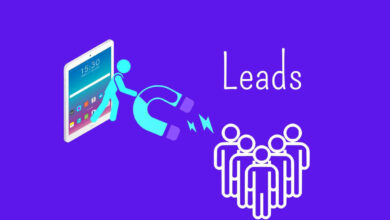Lead Generation: 7 Proven Strategies to Skyrocket Your Growth
Want to grow your business fast? Mastering lead generation is the ultimate game-changer. It’s not just about getting names—it’s about attracting the right people who actually want what you offer. Let’s dive into the strategies that actually work.
What Is Lead Generation and Why It Matters

Lead generation is the process of attracting and converting strangers into potential customers—people who’ve shown interest in your product or service. It’s the lifeblood of sales and marketing, fueling pipelines and driving revenue. Without a steady stream of leads, even the best products can go unnoticed.
The Core Definition of Lead Generation
At its heart, lead generation is about initiating consumer interest. This can happen through various channels—online forms, social media interactions, email sign-ups, or even in-person events. The goal is to collect contact information so businesses can nurture the relationship over time.
- It starts with awareness: someone learns about your brand.
- Then engagement: they interact with your content or offer.
- Finally, conversion: they provide their details, becoming a lead.
Why Lead Generation Is Critical for Business Growth
Without leads, there are no sales. It’s that simple. Effective lead generation builds a consistent pipeline, reduces customer acquisition costs, and increases marketing ROI. According to HubSpot, companies that excel at lead generation grow 2.5x faster than their peers.
“Lead generation isn’t a tactic—it’s a business strategy.” — Marketo
Types of Leads: Understanding the Buyer Journey
Not all leads are created equal. Understanding the different types helps you tailor your follow-up and improve conversion rates. From cold inquiries to ready-to-buy prospects, each stage requires a unique approach.
Marketing Qualified Leads (MQLs)
These are leads who’ve engaged with your marketing efforts—downloaded an ebook, attended a webinar, or subscribed to your newsletter. They show interest but aren’t yet sales-ready.
- Identified through behavior tracking (e.g., page visits, content downloads).
- Scored using lead scoring models based on engagement level.
- Passed to sales only when they meet predefined criteria.
Sales Qualified Leads (SQLs)
SQLs are leads that marketing has vetted and sales agrees are worth pursuing. They’ve shown buying intent—requesting a demo, asking for pricing, or engaging in direct conversations.
- Often result from direct outreach or high-intent actions.
- Require personalized follow-up from sales reps.
- Have a higher probability of converting into customers.
Product Qualified Leads (PQLs)
Common in SaaS and freemium models, PQLs are users who’ve experienced your product firsthand—through a free trial or limited access—and shown signs of readiness to upgrade.
- Behavior-based: frequent logins, feature usage, or reaching usage limits.
- Highly qualified because they’ve already seen value.
- Perfect for automated nurture campaigns with upgrade incentives.
Top 7 Lead Generation Strategies That Work in 2024
The digital landscape is evolving fast. To stay ahead, you need strategies that combine automation, personalization, and data-driven insights. Here are seven proven methods to boost your lead generation engine.
1. High-Value Content Marketing
Content is still king when it comes to lead generation. But not just any content—high-value, problem-solving content that addresses real pain points.
- Create in-depth guides, checklists, and templates that require an email to download.
- Use SEO to attract organic traffic from search engines.
- Leverage tools like Ahrefs to identify high-traffic keywords.
“Content marketing generates 3x as many leads as outbound marketing and costs 62% less.” — DemandMetric
2. Optimized Landing Pages with Strong CTAs
Your landing page is where interest turns into action. A poorly designed page can kill even the best traffic campaigns.
- Keep the design clean and focused on one goal: conversion.
- Use compelling headlines and benefit-driven copy.
- Include trust signals like testimonials, security badges, and case studies.
Tools like Unbounce and Instapage allow you to create high-converting landing pages without coding.
3. Lead Magnets That Actually Convert
A lead magnet is a free resource offered in exchange for contact information. The key is relevance and perceived value.
- Ebooks and whitepapers for B2B audiences.
- Discounts and coupons for e-commerce.
- Free trials or demos for SaaS companies.
The best lead magnets solve a specific problem quickly. For example, a “7-Day SEO Challenge” is more actionable than a generic “SEO Guide.”
4. Social Media Lead Generation Ads
Platforms like Facebook, LinkedIn, and Instagram offer powerful lead gen ad formats that simplify the sign-up process.
- Facebook Lead Ads auto-fill user info, reducing friction.
- LinkedIn Lead Gen Forms target professionals by job title, industry, and company size.
- Use retargeting ads to re-engage website visitors.
According to Meta for Business, lead ads can reduce cost per lead by up to 50% compared to traditional forms.
5. Email Marketing Funnels
Email remains one of the highest ROI channels for lead generation and nurturing.
- Build your list with pop-ups, exit-intent offers, and content upgrades.
- Use segmentation to send targeted messages based on behavior.
- Automate drip campaigns to nurture leads over time.
Tools like Mailchimp and Klaviyo make it easy to set up and scale email campaigns.
6. Webinars and Live Events
Webinars combine education and engagement, making them powerful lead generation tools.
- Promote your webinar through email, social media, and paid ads.
- Require registration to capture leads.
- Follow up with attendees and no-shows using automated emails.
According to ON24, 60% of webinar attendees are willing to share contact info, and 40% are open to a sales call.
7. Referral and Partner Programs
Leverage your existing customers and partners to generate high-quality leads.
- Offer incentives for referrals (discounts, cash, free months).
- Collaborate with complementary brands for co-marketing.
- Use platforms like ReferralCandy to automate the process.
Referred leads have a 30% higher conversion rate and a 16% higher lifetime value (Invesp).
Lead Generation Tools and Technologies
Manual lead generation is outdated. Today’s marketers use automation and AI-powered tools to scale their efforts and improve accuracy.
CRM Systems for Lead Management
A Customer Relationship Management (CRM) system is essential for organizing, tracking, and nurturing leads.
- Salesforce offers robust lead tracking and automation.
- HubSpot CRM is free and integrates seamlessly with marketing tools.
- Zoho CRM provides affordable options for small businesses.
CRMs help you assign lead scores, set follow-up tasks, and monitor conversion rates across the funnel.
Email Automation Platforms
Automating your email sequences ensures timely and consistent communication with leads.
- ActiveCampaign excels in behavioral-based automation.
- ConvertKit is ideal for creators and coaches.
- Sendinblue offers SMS and email in one platform.
These platforms allow you to trigger emails based on actions—like downloading a guide or visiting a pricing page.
Lead Capture and Form Builders
The easier it is to capture a lead, the more you’ll get. Form builders simplify this process.
- Typeform creates conversational, engaging forms.
- HubSpot Forms integrates with landing pages and CTAs.
- Google Forms is free but lacks advanced features.
Use smart fields and conditional logic to reduce friction and increase completion rates.
Measuring Lead Generation Success: Key Metrics
You can’t improve what you don’t measure. Tracking the right KPIs helps you optimize your lead generation campaigns for better results.
Conversion Rate
This measures the percentage of visitors who become leads. For example, if 1,000 people visit your landing page and 100 sign up, your conversion rate is 10%.
- Aim for at least 5–10% on landing pages.
- Test headlines, CTAs, and form length to improve rates.
- Use A/B testing tools like Optimizely or Google Optimize.
Cost Per Lead (CPL)
CPL tells you how much you’re spending to acquire each lead. It’s calculated by dividing total campaign spend by the number of leads generated.
- Lower CPL means better efficiency.
- Compare CPL across channels to allocate budget wisely.
- Optimize ad targeting and landing pages to reduce costs.
Lead-to-Customer Conversion Rate
This shows how many leads actually become paying customers. A high lead volume means nothing if few convert.
- Industry average is around 5–15%, but top performers hit 30%+.
- Improve qualification processes to pass better leads to sales.
- Align sales and marketing teams on lead definitions.
Common Lead Generation Mistakes to Avoid
Even experienced marketers make errors that sabotage their lead generation efforts. Recognizing these pitfalls can save you time, money, and frustration.
Targeting the Wrong Audience
Generating leads is pointless if they’re not your ideal customers. Misaligned targeting leads to low conversion and wasted resources.
- Define your buyer persona clearly: demographics, pain points, goals.
- Use audience insights from Facebook and Google Analytics.
- Test different segments to see who converts best.
Overlooking Lead Nurturing
Only 25% of leads are ready to buy immediately. The rest need nurturing through the funnel.
- Send educational content via email sequences.
- Use retargeting ads to stay top-of-mind.
- Personalize messages based on behavior and stage in the journey.
“It takes an average of 8 touchpoints to convert a lead into a customer.” — MarketingSherpa
Poor Follow-Up Processes
A lead is hot for only a short time. Delayed follow-up drastically reduces conversion chances.
- Respond within 5 minutes for the highest conversion (Harvard Business Review).
- Use chatbots or auto-responders to acknowledge submissions instantly.
- Set up automated workflows to assign leads to sales reps.
Future Trends in Lead Generation
The way we generate leads is changing. Artificial intelligence, privacy regulations, and shifting consumer behavior are reshaping the landscape.
AI-Powered Lead Scoring and Predictions
AI can analyze vast amounts of data to predict which leads are most likely to convert.
- Tools like Salesforce Einstein use machine learning to score leads in real time.
- Reduces guesswork and improves sales efficiency.
- Enables hyper-personalized messaging at scale.
Privacy-First Lead Generation
With cookie deprecation and GDPR/CCPA regulations, marketers must adapt to a cookieless world.
- Focus on first-party data collection through value exchanges.
- Use zero-party data—information customers willingly share.
- Build trust with transparent data policies and consent management.
Voice and Visual Search Optimization
As voice assistants and image-based search grow, optimizing for these channels becomes crucial.
- Optimize content for natural language queries (e.g., “Where can I buy eco-friendly shoes?”).
- Use structured data and schema markup for better indexing.
- Ensure images are high-quality and properly tagged for visual search.
Integrating Lead Generation with Sales: The Smarketing Alignment
Marketing generates leads, but sales closes them. When these teams don’t align, leads fall through the cracks.
Defining Shared Goals and KPIs
Both teams should agree on what constitutes a qualified lead and what success looks like.
- Set joint targets for lead volume, quality, and conversion rate.
- Hold regular sync meetings to review performance.
- Use shared dashboards in tools like HubSpot or Salesforce.
Creating a Service-Level Agreement (SLA)
A formal SLA between marketing and sales ensures accountability.
- Marketing commits to delivering X SQLs per month.
- Sales commits to contacting each SQL within Y hours.
- Both agree on lead handoff processes and feedback loops.
Feedback Loops for Continuous Improvement
Sales teams are on the front lines—they know which leads are good and which aren’t.
- Implement a system for sales to reject or accept leads with reasons.
- Use this feedback to refine targeting and messaging.
- Adjust lead scoring models based on real-world outcomes.
What is lead generation?
Lead generation is the process of attracting and converting strangers into potential customers by collecting their contact information. It’s the first step in the sales funnel and essential for building a sustainable pipeline.
What are the best lead generation strategies?
The most effective strategies include content marketing, landing page optimization, lead magnets, social media ads, email funnels, webinars, and referral programs. The best approach depends on your audience, industry, and resources.
How do you measure lead generation success?
Key metrics include conversion rate, cost per lead (CPL), lead-to-customer conversion rate, and ROI. Tracking these helps you optimize campaigns and allocate budget effectively.
What tools are best for lead generation?
Top tools include HubSpot, Salesforce, Mailchimp, Unbounce, Ahrefs, and LinkedIn Lead Gen Forms. These help with content creation, lead capture, automation, and analytics.
How can I generate more high-quality leads?
Focus on targeting the right audience, offering valuable lead magnets, nurturing leads with personalized content, and aligning sales and marketing teams. Quality matters more than quantity.
Lead generation is not a one-time campaign—it’s an ongoing strategy that fuels business growth. From understanding lead types to leveraging AI and aligning teams, success comes from a holistic approach. The strategies outlined here provide a roadmap to generate more leads, convert them efficiently, and build a scalable sales pipeline. Start small, test often, and refine based on data. The future of lead generation is smart, personalized, and privacy-conscious—adapt now to stay ahead.
Further Reading:
